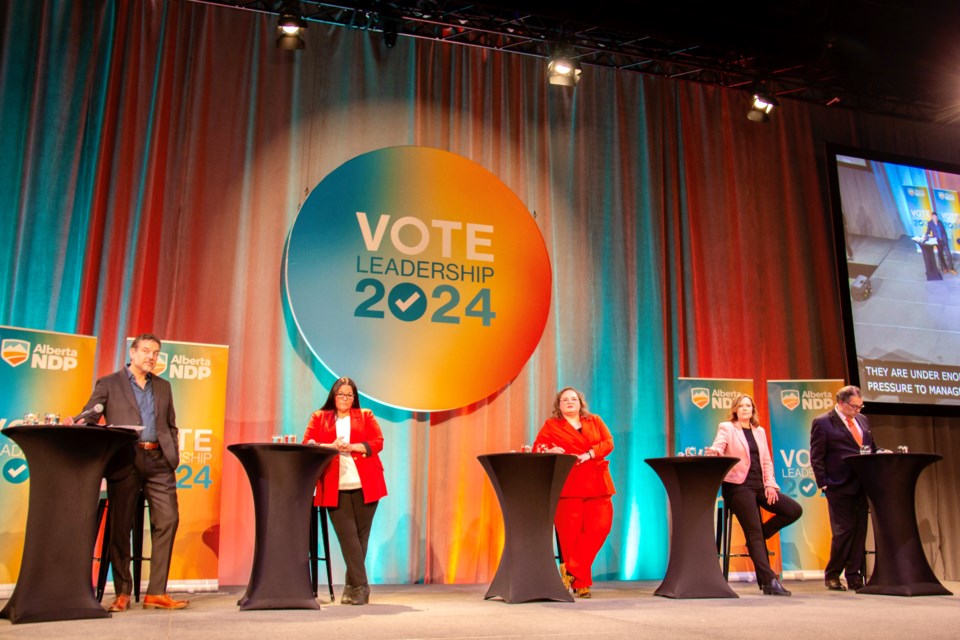The Alberta NDP came into 2024 with around 16,000 party members. Since Rachel Notley’s resignation triggered a leadership contest this spring, there has been a five-fold increase in the number of card-carrying NDP members.
When the party chooses its new leader on June 22, over 85,000 Albertans could be casting a ballot. But what does this membership boom look like in rural Alberta? And what does it mean for the NDP’s election prospects outside of major cities?
The biggest NDP success story has been in Calgary. In 2019, the NDP only won three seats in the city. Building on momentum from last year’s provincial election, and the buzz around leadership candidates former mayor Naheed Nenshi and Calgary-Mountain View MLA Kathleen Ganley, Calgary now accounts for just under half of all Alberta NDP memberships.
Twenty-nine per cent of party memberships are from districts outside of Edmonton and Calgary. Excluding the seven largest cities — Edmonton, Calgary, Red Deer, Grande Prairie, Medicine Hat, Lethbridge, and Fort McMurray — Alberta’s NDP currently has 18,291 party members, more than the provincial membership total just five months ago, according to data provided by the Kathleen Ganley leadership campaign team.
“We've seen membership growth, which I think is a really good indicator. Although there is obviously not a direct correlation between membership growth and vote percentage growth,” Ganley said, adding the party saw a vote increase in rural Alberta in the previous election, but only in Banff-Kananaskis was it enough to win a rural riding.
Membership might not be a strong predictor of future political engagement — only 69 per cent of eligible UCP members voted in the last party leadership campaign — but Ganley said there are other signs hinting at shifting attitudes toward the NDP.
“I was out at Airdrie last summer, and the reception was very warm. Much warmer for an NDP table than you would expect it to be,” she said. “That definitely does say something, that people are more open and more curious than they were.”
“I think for progressives, in smaller cities to some degree and in rural areas in particular, the battle really is getting someone to think about the values of a policy. It's not just sort of a reflex reaction to names of parties. And I think that we're seeing that openness grow a lot.”
Growing up in Calgary, Ganley said the same narrative of Albertans being reflexively conservative was applied to people in her city as it is now to those outside of it. When Ganley first signed up to run in 2015, the NDP had historically pulled between four and six per cent of the vote.
Past failures to make gains among conservatives are in part due to progressive candidates not entering those spaces and talking about economics in a way that links people’s values and NDP platforms, Ganley suggested.
“There is a left-wing perspective on the economy," she said. "And I think that old conservative story that if you give more to your boss, then that will be good for the economy, it'll be better for everyone, that's not true. There's a lot of evidence that demonstrates it's not true. But we need to talk about that in terms of ourselves, and in terms of positivity.”
Four candidates remain in the NDP leadership race: Nenshi, Ganley, Edmonton-Rutherford MLA Jodi Calahoo Stonehouse, and Edmonton-Glenora MLA Sarah Hoffman.




